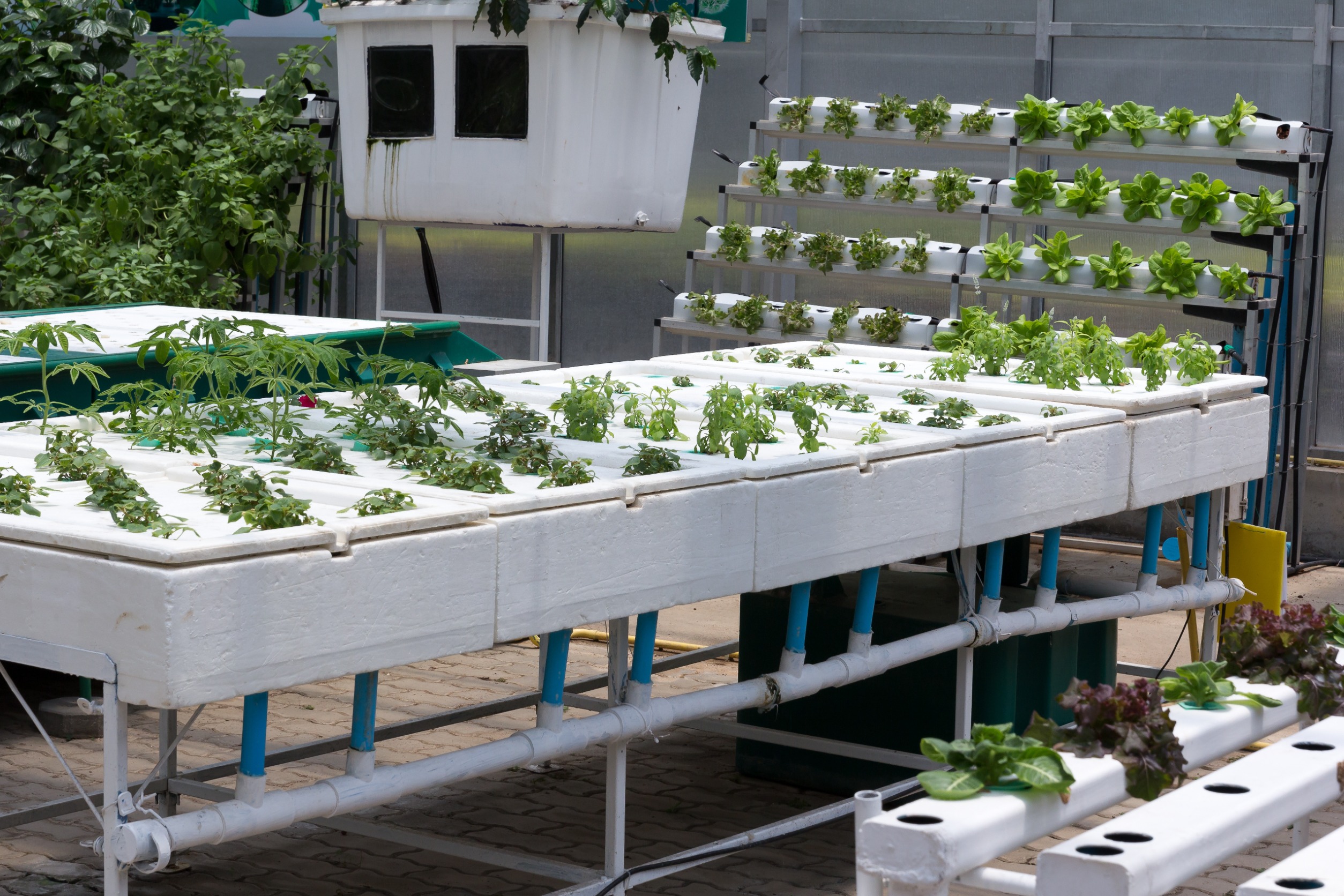Imagine entering a lush, verdant garden as soon as you step onto a rooftop. A flourishing ecosystem of fish, veggies, and fruits—not just any garden. Greetings from the realm of aquaponic and hydroponic rooftop systems.
These cutting-edge farming techniques transform urban agriculture by enabling residents to raise fish and fresh veggies directly above their heads.
What Are Hydroponics and Aquaponics?
Hydroponics is a technique for growing plants without soil using mineral fertilizer solutions in a water solvent. It makes it possible to precisely regulate the nutrients plants receive, promoting quicker growth and greater yields. Conversely, aquaponics blends hydroponics with aquaculture or the raising of fish.
This technique creates a self-sustaining ecosystem by using fish excrement as an organic source of nutrients for plants, which in turn helps to purify the water for the fish.
What Makes Rooftops Important?
There is a well-known shortage of space in urban places. One mostly unexplored resource that can be utilized for agriculture is rooftops. Making these unused areas into productive gardens is advantageous and required, given the growing emphasis on local food production and sustainable living.
The Advantages of Aquaponic and Hydroponic Systems on Rooftops
1. Local, Fresh Produce
On your rooftop, you can get the freshest vegetables possible with an aquaponic or hydroponic system. The carbon impact of moving food from rural farmers to urban markets is not a concern. When your food is ripe, you may pick it up and start eating immediately.
2. Optimized Use of Space
Rooftops provide a novel solution to the space constraint that urban areas face. Cities can increase food production without requiring more land by converting these spaces into gardens.
3. Effects on the Environment
Hydroponic systems use up to 90% less water than conventional soil farming. Aquaponic systems are very sustainable since they effectively recycle water. These technologies also lessen the need for herbicides and pesticides, making the environment healthier and cleaner.
4. Financial Gains
Rooftop farming has the potential to provide new revenue streams. Locals can lower food expenses and generate cash by selling extra produce at neighborhood markets. The insulating qualities of rooftop gardens and enhanced building aesthetics can decrease utility expenditures for businesses.
5. Establishing a Community
Communities can come together through rooftop gardens. They allow locals to congregate, collaborate, and learn sustainable farming methods. A stronger sense of belonging and shared duty may result from this.
Strategies and Methods for Rooftop Systems
1. Selecting the Appropriate System
Selecting the method that best fits your demands and available area is the first step in setting up a rooftop hydroponic or aquaponic system.
Examples of hydroponic systems are simple installations like the wick system and more intricate ones like aeroponics and nutrient film technology. Planning is crucial since aquaponic systems need a balance between the quantity of fish and plants.
2. Urban Environment-Based Design
Rooftop gardens face wind, weight limitations, and water availability. Designing systems that can endure these circumstances is crucial. This could include effective irrigation systems, windbreaks, and lightweight growing media.
3. Choosing the Proper Fish and Plants
Not every fish or plant can be grown in an aquaponic or hydroponic system. These arrangements are ideal for leafy greens, herbs, and some fruits, such as strawberries. Tilapia’s hardiness and quick growth rate make it a popular choice for aquaponic systems. Look into the finest solutions for your space and climate.
4. Upkeep and Observation
Hydroponic and aquaponic systems need to be regularly monitored to guarantee ideal conditions. This involves assessing the water’s quality, nutrient content, and pH levels. Purchasing automated solutions can aid in the more effective management of these duties.
5. Including Technology
Technology can significantly increase the efficiency of rooftop farming. Temperature, lighting, and nutrient levels can all be monitored and adjusted by automated sensors and controls. Software and apps for mobile devices can be used to monitor development and spot any problems before they become serious.
Prospects and Patterns for the Future
1. Urban Agriculture and Smart Cities
Urban agriculture is an important part of the growing idea of smart cities. More sustainable cities can result from incorporating aquaponic and hydroponic systems into urban planning. This covers rooftops, urban greenhouses, green walls, and vertical farming.
2. Educational Programs
Initiatives for education are crucial as rooftop farming gains traction. Educational institutions, community organizations, and schools can offer programs to educate people about hydroponics and aquaponics. This can encourage sustainability and motivate the upcoming generation of urban farmers.
3. Cooperation and Creativity
Urban agriculture’s future depends on cooperation and creativity. Communities, companies, and governments may collaborate to create new technology and techniques that will increase the efficiency and accessibility of rooftop farming. This entails investigating novel plant species, sophisticated automation, and renewable energy sources.
4. Support and Policy
The development of rooftop farming may be greatly aided by government assistance and policies. This can include grants for research and development, company tax breaks, and system setup subsidies. Campaigns to raise public awareness of the advantages of urban agriculture can also be helpful.
Conclusion
Aquaponic and hydroponic systems atop rooftops are a cutting-edge method of urban gardening. They provide a profitable, effective, and sustainable means of growing fresh food in the middle of the metropolis.
These technologies are helping to create a more sustainable future by making the most of available space, minimizing their negative effects on the environment, and encouraging community.
As knowledge and technology continue to progress, the potential of rooftop farming will only increase. Investigating the potential of hydroponics and aquaponics may be a fruitful experience, regardless of whether you’re a city dweller hoping to grow your garden or a company aiming to improve your sustainability initiatives.

